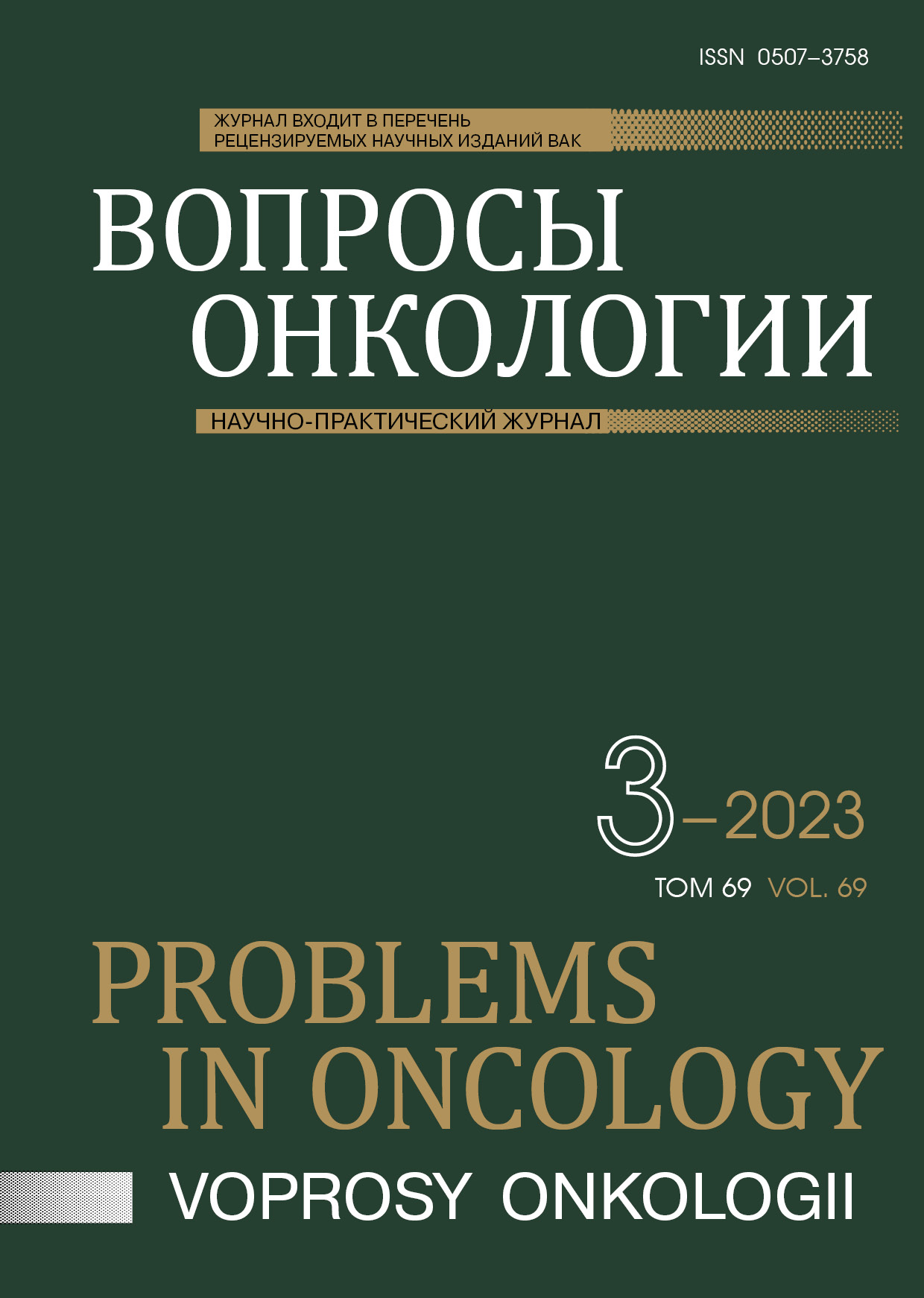Аннотация
Серьезным осложнением онкологических заболеваний у детей является венозная тромбоэмболия (ВТЭ). Одной из основных причин ее развития, помимо самого злокачественного новообразования, является наличие центрального венозного катетера. Развившуюся ВТЭ у детей обычно лечат «классическими» антикоагулянтами: нефракционированным гепарином, низкомолекулярными гепаринами и антагонистами витамина К (АВК). Однако их использование связано с множеством проблем: ежедневные инъекции (для гепаринов), межлекарственные взаимодействия и необходимость корректировки дозы в соответствии с содержанием витамина К в рационе (для АВК), тщательный регулярный мониторинг для поддержания целевых терапевтических уровней. Эти особенности лечения более обременительны у детей, чем у взрослых. Переход на терапию пероральными антикоагулянтами прямого действия мог бы значительно упростить ведение пациентов детского возраста с ВТЭ. В данной научной работе представлены и проанализированы основные итоги крупного клинического исследования EINSTEIN-Junior, целью которого было сравнение эффективности и безопасности применения ривароксабана и стандартных антикоагулянтов у детей с венозной тромбоэмболией. Также в работе приводятся аргументы, позволяющие предположить эффективность и безопасность использования ривароксабана у детей с наличием онкологических заболеваний.
Библиографические ссылки
Athale U, Siciliano S, Thabane L, et al. Epidemiology and clinical risk factors predisposing to thromboembolism in children with cancer. Pediatr Blood Cancer. 2008;51(6):792–7. doi:10.1002/pbc.21734.
Pelland-Marcotte MC, Tucker C, Klaassen A, et al. Outcomes and risk factors of massive and submassive pulmonary embolism in children: a retrospective cohort study. Lancet Haematol. 2019;6:e144-53. doi:10.1016/S2352-3026(18)30224-2.
Piovesan D, Attard C, Monagle P, et al. Epidemiology of venous thrombosis in children with cancer. Thromb Haemost. 2014;111(06):1015–21. doi:10.1160/TH13-10-0827.
Жарков П.А., Румянцев А.Г., Новичкова Г.А. Венозные тромбозы у детей со злокачественными новообразованиями (обзор литературы). Российский журнал детской гематологии и онкологии. 2015;2(1):66–74 [Zharkov PA, Rumyantsev AG, Novichkova GA. Venous thromboembolism in children with cancer. Rossiyskiy zhurnal detskoy gematologii i onkologii. Russian Journal of Pediatric Hematology and Oncology. 2015;2(1):66–74 (In Russ.)]. doi:10.17650/2311-1267-2015-1-66-74.
Male C, Monagle P, Albisetti M, et al. Direct oral anticoagulants: overcoming the challenges of managing venous thromboembolism in children. J Pediatr. 2022;240:14-23. doi:10.1016/j.jpeds.2021.09.025.
O’Brien SH, Candrilli SD. In the absence of a central venous catheter, risk of venous thromboembolism is low in critically injured children, adolescents, and young adults: evidence from the National Trauma Data Bank. Pediatr Crit Care Med. 2011;12:2516. doi:10.1097/PCC.0b013e3181f36bd9.
Monagle P, Adams M, Mahoney M, et al. Outcome of pediatric thromboembolic disease: a report from the Canadian Childhood Thrombophilia Registry. Pediatr Res. 2000;47:7636. doi:10.1203/00006450-200006000-00013.
Monagle P, Chan AKC, Goldenberg NA, et al. Antithrombotic therapy in neonates and children: antithrombotic therapy and prevention of thrombosis, 9th ed: American College of Chest Physicians evidence-based clinical practice guidelines. Chest. 2012;141(2 Suppl):e737Se801S. doi:10.1378/chest.11-2308.
Chandarajoti K, Liu J, Pawlinski R. The design and synthesis of new synthetic low-molecular-weight heparins. J Thromb Haemost. 2016;14:113545. doi:10.1111/jth.13312.
Ko RH, Michieli C, Lira JL, et al. FondaKIDS II: long-term followup data of children receiving fondaparinux for treatment of venous thromboembolic events. Thromb Res. 2014;134:6437. doi:10.1016/j.thromres.2014.07.026.
O’Brien SH, Yee DL, Lira J, et al. UNBLOCK: an open-label, dose-finding, pharmacokinetic and safety study of bivalirudin in children with deep vein thrombosis. J Thromb Haemost. 2015;13:161522. doi:10.1111/jth.13057.
Ansell J, Hirsh J, Poller L, et al. The pharmacology and management of the vitamin K antagonists: the Seventh ACCP Conference on Antithrombotic and Thrombolytic Therapy. Chest. 2004;126(3 Suppl):204S33S. doi:10.1378/chest.126.3_suppl.204S.
Raskob GE, Büller HR, Segers A. Edoxaban for cancer-associated venous thromboembolism. N Engl J Med. 2018;379(1):9596. doi:10.1056/NEJMc1806646.
Young AM, Marshall A, Thirlwall J, et al. Comparison of an oral factor Xa inhibitor with low molecular weight heparin in patients with cancer with venous thromboembolism: results of a randomized trial (SELECT-D). J Clin Oncol. 2018;36(20):20172023. doi:10.1200/JCO.2018.78.8034.
McBane RD 2nd, Wysokinski WE, Le-Rademacher JG, et al. Apixaban and dalteparin in active malignancy-associated venous thromboembolism: The ADAM VTE trial. J Thromb Haemost. 2020;18(2):41121. doi:10.1111/jth.14662.
Verso M, Munoz A, Bauersachs R, et al. Effects of concomitant administration of anticancer agents and apixaban or dalteparin on recurrence and bleeding in patients with cancer-associated venous thromboembolism. Eur J Cancer. 2021;148:371381. doi:10.1016/j.ejca.2021.02.026.
Giustozzi M, Agnelli G, Del Toro-Cervera J, et al. Direct oral anticoagulants for the treatment of acute venous thromboembolism associated with cancer: a systematic review and meta-analysis. Thromb Haemost. 2020;120(7):11281136. doi:10.1055/s-0040-1712098.
Moik F, Posch F, Zielinski C, et al. Direct oral anticoagulants compared to low‐molecular‐weight heparin for the treatment of cancer‐associated thrombosis: Updated systematic review and meta‐analysis of randomized controlled trials. Res Pract Thromb Haemost. 2020;00:112. doi:10.1002/rth2.12359.
Mulder FI, Bosch FTM, Young AM, et al. Direct oral anticoagulants for treatment of cancer-associated venous thromboembolism: A systematic review and meta-analysis. Blood. 2020;136(12):14331441. doi:10.1182/blood.2020005819.
Attard C, Monagle P, Kubitza D, et al. The in vitro anticoagulant effect of rivaroxaban in children. Thromb Res. 2012;130:8047. doi:10.1016/j.thromres.2012.07.009.
Attard C, Monagle P, Kubitza D, et al. The in-vitro anticoagulant effect of rivaroxaban in neonates. Blood Coagul Fibrinolysis. 2014;25:23740. doi:10.1097/MBC.0000000000000033.
Willmann S, Becker C, Burghaus R, et al. Development of a paediatric population-based model of the pharmacokinetics of rivaroxaban. Clin Pharmacokinet. 2014;53:89102. doi:10.1007/s40262-013-0090-5.
Kubitza D, Willmann S, Becka M, et al. Exploratory evaluation of pharmacodynamics, pharmacokinetics and safety of rivaroxaban in children and adolescents: an EINSTEIN-Jr phase I study. Thromb J. 2018;16:31. doi:10.1186/s12959-018-0186-0.
Willmann S, Thelen K, Kubitza D, et al. Pharmacokinetics of rivaroxaban in children using physiologically based and population pharmacokinetic modelling: an EINSTEIN-Jr phase I study. Thromb J. 2018;16:32. doi:10.1186/s12959-018-0185-1.
Monagle P, Lensing AWA, Thelen K, et al. Bodyweight-adjusted rivaroxaban for children with venous thromboembolism (EINSTEIN-Jr): results from three multicentre, single-arm, phase 2 studies. Lancet Haematol. 2019;6:e5009. doi:10.1016/S2352-3026(19)30161-9.
Male C, Lensing AWA, Palumbo JS, et al. Rivaroxaban compared with standard anticoagulants for the treatment of acute venous thromboembolism in children: a randomised, controlled, phase 3 trial. Lancet Haematol. 2020;7:e1827. doi:10.1016/S2352-3026(19)30219-4.
Young G, Lensing AWA, Monagle P, et al. Rivaroxaban for treatment of pediatric venous thromboembolism. An EINSTEIN-Jr phase 3 dose-exposure-response evaluation. J Thromb Haemost. 2020;18:167285. doi:10.1111/jth.14813.
Prandoni P, Lensing AW, Piccioli A, et al. Recurrent venous thromboembolism and bleeding complications during anticoagulant treatment in patients with cancer and venous thrombosis. Blood. 2002;100(10):34848. doi:10.1182/blood-2002-01-0108.

Это произведение доступно по лицензии Creative Commons «Attribution-NonCommercial-NoDerivatives» («Атрибуция — Некоммерческое использование — Без производных произведений») 4.0 Всемирная.
© АННМО «Вопросы онкологии», Copyright (c) 2023

